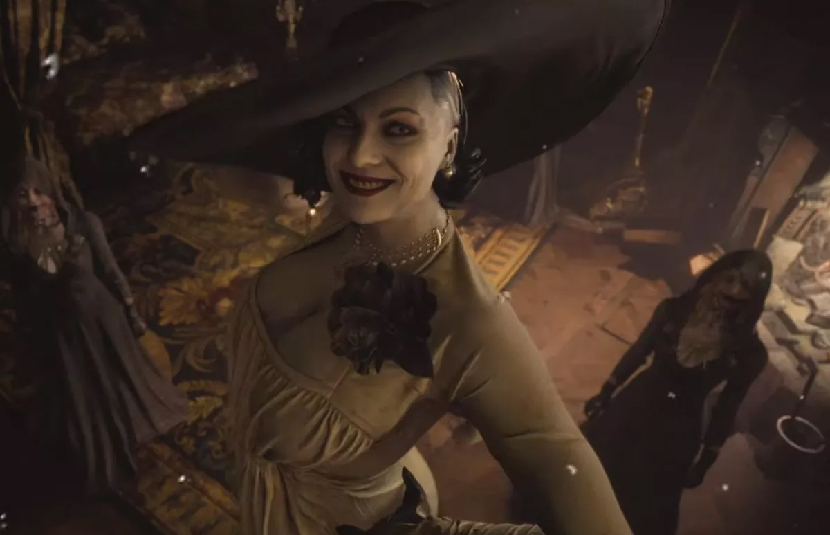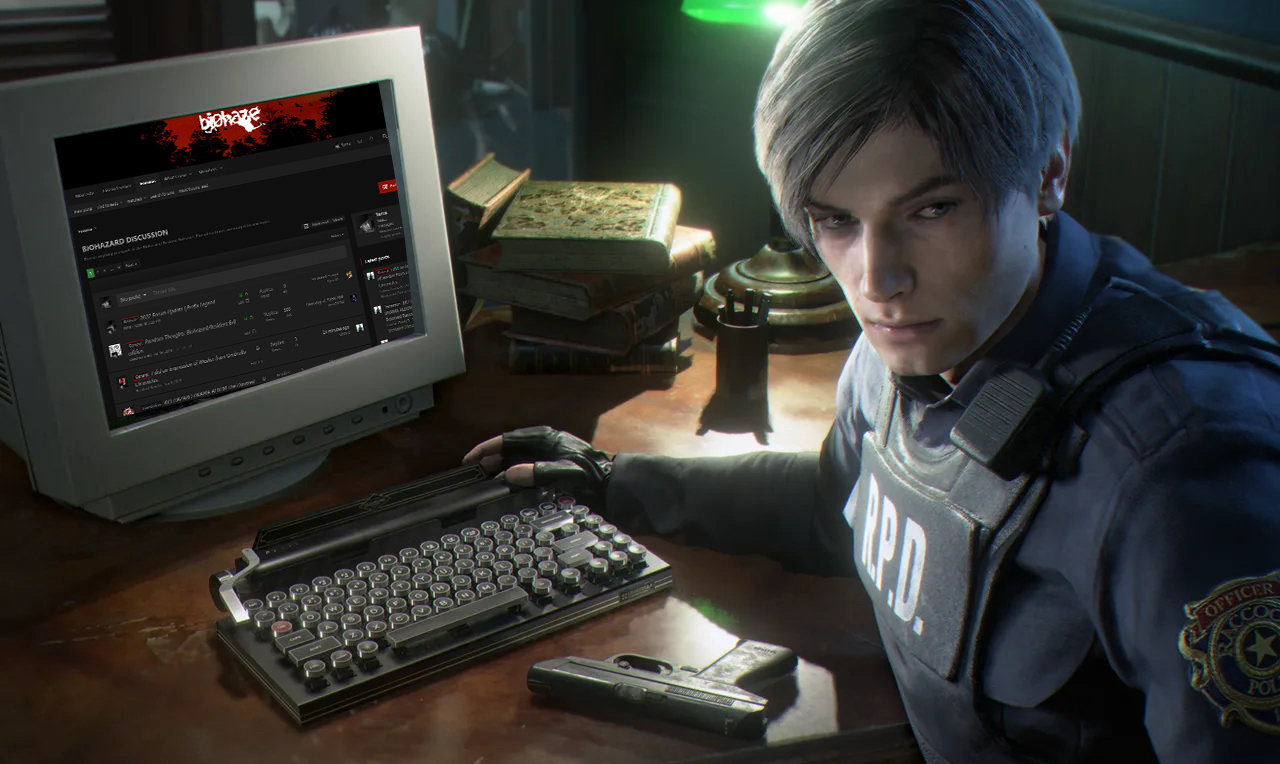You are using an out of date browser. It may not display this or other websites correctly.
You should upgrade or use an alternative browser.
You should upgrade or use an alternative browser.
RE:2 RE:2 vs RE:3
- Thread starter ChrisRedfield_08
- Start date
Idk you never actually see Mr. X vanish like 2020 Nemmy so I disagree with that. I honestly hated how enemies drop loot, it completely removes any sense of realism and makes it more arcadey. The amount of times RE has introduced a stalker AI and failed to improve on it baffles me, they can’t even improve upon 1999 Nemmy.Cool essay but ı dont agree with some parts.
I like nemesis' 2nd form; it looks good imo. Plus nemesis is infected with ne-alpha parasite, not just simply t-virus so it can cause those mutations. I agree that the 2nd form should had been final form though. Final form is pathetic. They basically combined jack's mutated form and eveline's mutated form into one.
Giving nemesis a gatling gun would cause the rocket launcher to get underutilized again not to mention nemesis doesnt need more than one tool; it has multiple mutations instead. The 2020 version should have had only the rocket launcher instead of rocket launcher and flamethrower together while not making that much of use of any of those tools.
Nemesis reminds me more of rachel rather than ustanak cause ustanak doesnt drop loot while rachel does.
As for t-103; ı dont think it was improved either. It doesnt even drop anything when temporarily defeated unlike in og re2. It might stalk you more but it also sometimes teleports which is more immersion breaking ( It's also possible that 2 of them might appear at the same time to stalk you. ) than nemesis' way of traveling not to mention it feels less realistic to simply teleport than traveling using tentacles. It is overused while nemesis is underutilized. It should had been exclusive to 2nd run while its mutated form appearing as a boss fight to both characters instead of only to leon.
Sometimes, I wonder if the same people employed at Capcom in 2000 are still there today. LOL. Maybe just a handful of them remain, but you never think so. But they have really neutered the franchise.
I know people praise RE2 more than RE3. It's still nothing like what we asked for. There's too much to list that's wrong with it, but key examples are removing Ada's classic design, changing the Ivy plants, reusing zombie models, the bad AI, and the general lameness of some segments so iconic in the originals.
They also need to go back to third person after Ethan finally dies. I hope he does. ?
I know people praise RE2 more than RE3. It's still nothing like what we asked for. There's too much to list that's wrong with it, but key examples are removing Ada's classic design, changing the Ivy plants, reusing zombie models, the bad AI, and the general lameness of some segments so iconic in the originals.
They also need to go back to third person after Ethan finally dies. I hope he does. ?
I've never played any of the Clock Tower games but I've wanted to for years, especially the very first one for SNES (which interestingly enough turns 25 years old today).Oh, I certainly do miss Clock Tower in this day and age. That was one of my favourite horror games way back in 2004. I'm not sure, but I think Capcom obtained the rights, and made one game. It flopped, and that was it for the series. At one time, I think they even planned a movie adaption of the third game (technically the fourth), where Alyssa Hamilton would have been the main character. ?
Capcom unfortunately missed the boat so many times with their opportunities. At least Resident Evil Village looks better than 7: Biohazard is. ?
I'm sure you've probably seen this video. It got me interested in the game several years ago. I really like how the creator incorporated RE1 music and SFX so well!
I remember when those unofficial Jack Baker shirts went on sale just after the game was unveiled at E3 in 2016. 
Jack Baker is kind of legendary...
Jack Baker is kind of legendary...
I have to give the remake credit for putting a limiter on Nemesis and allowing him to become a Super Tyrant. This is what the original is missing for some reason. Despite the parasite, Nemesis doesn't stop being a Tyrant, so he must become a Super Tyrant if he doesn't have a limiter.
I would very much like someone to ask Kawamura one day why the original breaks this continuity.
I would very much like someone to ask Kawamura one day why the original breaks this continuity.
It doesnt? His 2nd mutation is a dog-like monster while his last mutation is a giant wall. It doesnt become a super tyrant unlike in og game where his 2nd mutation technically counts as one. So it has a power limiter on og game too.
The second form of Nemesis from the remake is Super Tyrant. This happened because his limiter was damaged by an explosion, which was confirmed by the game's director.
The fact that Nemesis became quadrupedal may refer to that the Tyrants of his series were created using a strain that was created by Birkin and that turns Zombie into Licker.
Super Tyrants are essentially not a second form. This is the real form of Tyrants, so to maintain their human form without huge claws and other features, Umbrella invented various limiters. For the T-103 series, such limiters were uniforms.
Nemesis didn't have a limiter in the original, he didn't turn into a Super Tyrant. When the Tyrant lost his cloak, he continued to maintain his human form without any explanation. His third form is not a third form at all. It's not even a Tyrant anymore, because by this time, the Tyrant's brain was already destroyed. It was a parasite that was looking for biomaterial.
Nemesis in the RE3 remake may as well have been a comic book hero. When he does that ridiculous grapple thing indoors, it looks so stupid. 
Do you have a source for that?

Nemesis Invades Resident Evil Resistance in New Update, Live Now
Capcom discusses updating Nemesis for both RE3 and the asymmetrical online multiplayer game.
 blog.playstation.com
blog.playstation.com
The trigger for the transformation is a combination of taking damage from Mikhail’s attack and the restrictive gear burning off combined with the regulation device breaking. As a result, the NE-α regenerative capabilities went wild. The transformation is a result of no longer being able to maintain humanoid form through the regenerative process.
Apparently, there's a multiplayer mode coming to Resident Evil Village. That 'Resistance' mode that they included with the RE3 remake, is A grade garbage. What happened to an Outbreak remake or getting a sequel, of sorts? 

 bloody-disgusting.com
bloody-disgusting.com
Come on, Capcom. Fan service... PLEASE!

Updated Info on Steam Page For ‘Resident Evil Village’ Includes a Multiplayer Component
Capcom is busy prepping for the big Resident Evil Showcase happening this Thursday, but already a pretty significant detail about the upcoming Resident Evil Village has made its way online, courtesy of the game’s own Steam page. And while it’s not as spoiler-y as the potential plot twist that...
 bloody-disgusting.com
bloody-disgusting.com
Come on, Capcom. Fan service... PLEASE!
I didn't like it. Nemesis is awful. There's no ending with Barry. Maybe if one plays it and pretends it's not a remake, they won't feel bad. Like, pretend it's just a game that came out and it's about zombies and monsters overtaken a city, and that it is not a remake, but a retelling as it's advertised, and MAYBE then, you can enjoy it. But so many people in the RE fanbase hate this game.
It felt rushed. Some even refer to it as "DLC" for RE2, because it didn't feel as big budgeted. After a somewhat solid RE2 remake, this let me down. Although personally, I felt like the remake of RE2 was one you had to try to not compare so much to the way more splendid 1998 version.
It felt rushed. Some even refer to it as "DLC" for RE2, because it didn't feel as big budgeted. After a somewhat solid RE2 remake, this let me down. Although personally, I felt like the remake of RE2 was one you had to try to not compare so much to the way more splendid 1998 version.
The game wasn't rushed, otherwise it would have looked worse and wouldn't have worked properly. But it was definitely designed as a linear story with a focus on action and with less investment. While Capcom now has a plan to sell 10 million copies of Resident Evil Village, the plan for Resident Evil 3 was to sell less than 4 million copies. That's saying a lot.
And do not think that I invented this information, because the presentation about the game design and the sales plan were leaked by hackers.
And do not think that I invented this information, because the presentation about the game design and the sales plan were leaked by hackers.
RE8 seems like a much needed return to survival horror. I've never been all that keen on the boring action based ones. On the downside though, RE8 doesn't even feel like a RE game, considering the move towards folklore inspired enemies.
Now, yes. I know RE4 kind of did that too. But it's all quite LOL. Keep in mind, this series originally had things like the zombies, Hunters, Lickers, and Nemesis. Oh, and for several entries, the franchise had its original premise being based in an American city. That was RE to me...
They've came a long, long way since 1996. I swear. But I mean, I do believe RE8 will be enjoyable enough. It just seems like they're jumping the shark nowadays.
Respect goes out to Neptune here, of course.
Now, yes. I know RE4 kind of did that too. But it's all quite LOL. Keep in mind, this series originally had things like the zombies, Hunters, Lickers, and Nemesis. Oh, and for several entries, the franchise had its original premise being based in an American city. That was RE to me...
They've came a long, long way since 1996. I swear. But I mean, I do believe RE8 will be enjoyable enough. It just seems like they're jumping the shark nowadays.
Respect goes out to Neptune here, of course.
Keep in mind, this series originally had things like the zombies, Hunters, Lickers, and Nemesis.
Zombies in the classic games of the series are not the real living dead, because the t-Virus is not able to resurrect the dead. These enemies are so called because they just look like George Romero's undead, but they are not undead. They're not real zombies. It's the same with Lycans, who look like werewolves but aren't really werewolves.
The point of the Resident Evil formula is not to show you a zombie game, but to create intrigue by making mysterious enemies whose biology you don't understand. When the players and characters first entered the Spencer Mansion, no one knew the origin of all the enemies, which is why Richard considered them demons. Mysterious were not only Romero's undead, but also Hitchcock's birds, Spielberg's sharks, and other enemies inspired by various sources. The player discovers all the scientific explanations only during the journey.
To constantly create such intrigues, the developers use different sources of inspiration as references, so in the second game we see Norman Bates as the police chief, the T-103 Terminator, and even the Xenomorphs from the lab, the design of which was created based on the film Aliens.
But the developers do not choose references unreasonably: Romero's undead are part of American culture, and vampires and werewolves are associated with Romania. For the same reason, the developers made references to the classic slasher flicks, when the places of events were the Arklay Mountains and Louisiana, isolated from the whole world and lovable for tourists and teenagers. Even the connection of the doll from Resident Evil Village with the Italian family is most likely based on Carlo Collodi's legacy.
Resident Evil is an anthology series that uses established biology to explore different genres and subgenres. And Resident Evil Village is true to this idea as well.
I’m sure certain strains of T-Virus can resurrect the dead as seen in the graveyards of RE3 and CVX, with T-Alfred being the one that leaked on Rockford Island, correct me if I am wrong.
Treating REmake 2 and 3 like the Chronicles games is the best way to approach them IMO. After seeing someone play RE3 scenario in UC recently, I look more fondly on REmake 3 and don’t hate it for what its not, which is a faithful remake. They are good entry level games for new fans who want to get into the franchise.
I also heard they shared the same budget and were intended to be one game anyway. If that was the case, than 2 definitely took up more of it than 3 and it shows with the rushed nature of the game.
I still love their gameplay but Capcom needs to step it up if REmake 4 is going to replace the original, let alone CVX.
Treating REmake 2 and 3 like the Chronicles games is the best way to approach them IMO. After seeing someone play RE3 scenario in UC recently, I look more fondly on REmake 3 and don’t hate it for what its not, which is a faithful remake. They are good entry level games for new fans who want to get into the franchise.
I also heard they shared the same budget and were intended to be one game anyway. If that was the case, than 2 definitely took up more of it than 3 and it shows with the rushed nature of the game.
I still love their gameplay but Capcom needs to step it up if REmake 4 is going to replace the original, let alone CVX.
Last edited:

